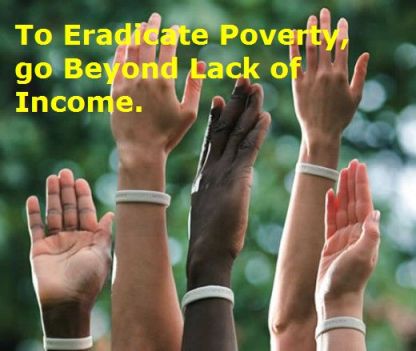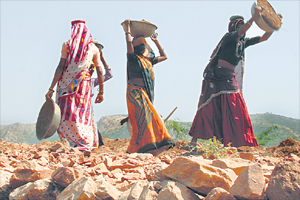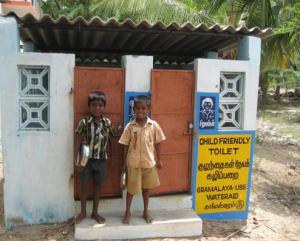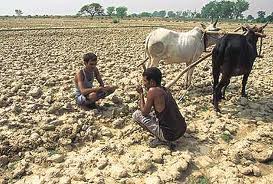INTRODUCTION
This block deals with the concept of the state as an institution, its impact on other societal institutions. It also provides basic information on many other concepts associated with the state and politics.
The modem state is a complex set of institutions, which are highly integrated and structured. The persons comprising the state are not treated as individuals but as citizens or voters. Since the laws provide them equality, all citizens are ideally speaking (and this is provided in our constitution as well) treated equally with rights and privileges. The state has built up a web of institutions to administer and govern. The government is composed of individuals and officials occupying these institutions who derive their authority from their office.
STATE
A community or society politically organised under one independent government within a definite territory can be called a State. The state is a special institution, which serves the interest of the whole community, or a class of society. The state emerges at a definite stage of social development, and in order to understand the state. social evolution, in general, must be understood first. Without understanding the general laws of social development, the state and politics cannot be studied objectively.
The main elements of a state are as follows:
Population
All states must have a population. No explicit or fixed figure can be considered as the ideal size of population. There is no rule or political practice governing the number of persons necessary to entitle a community to recognition as a State. Some writers in the past have, however, undertaken to lay down within broad lines certain principles, which should determine the size of the population, necessary for the existence of a State, and some have even assumed to fix exactly the minimum and the maximum number of inhabitants, but manifestly any such rule would be arbitrary.
Territory
Territory is another essential physical constituent of the State. Territory of the State consists not only of a definite portion of land, but also includes water and air space within its boundary. It also extends in addition to a distance of three miles into the sea from its coast, an area called 'the territorial waters'. The state boundaries may be natural that is, they may be bodies of water, mountain ranges, and deserts, or artificial, like stones: trenches, walls etc. There is no rule or practice concerning the extent of territory necessary to constitute the home of a State, any more than there is, regarding the amount of population.
Government
A mere mass of people occupying a practical portion of territory does not constitute a State until the people have organised themselves politically, and established a civil government. There must be some political agency that comnands and regulates the governed who obeys. The government exercises the authority of the State. Government is a narrower term than the State, being only part of it. The State includes both the government and the governed. The government is the established form of political administration of a State.
Sovereignty
It means the supreme and ultimate power of the State by virtue of which it may command and enforce obedience. It is this. which distinguishes the State from all other associations and organisations. Sovereignty is characteristic of the State, not of the government, though the government on behalf of the State may exercise it. There can be no State without sovereignty.
International Recognition
In reality, international recognition is the outcome of the sovereignty of the State, not the condition of its existence. States are sometimes defined as those entities recognized by other States. A State recognizes another State when its government is convinced that the other State has the characteristic of a State. Recognition is the voluntary action of one State for another.
Role of the State and Impact on other Institutions
The State takes the responsibility to provide all the public goods such as education, health care, drinking water, basic infrastructure in both rural and urban settings, and provide social security, etc. In India, the Tenth Plan, in this emerging scenario, intakes a distinct shift from an investment-oriented approach to setting a reform agenda designed to achieve the social targets through effective governance. It relies on the mobilization of the energies of Central and State Governments, Panchayat Raj institutions and Non - Governmental Organisations for the accomplishment of the clearly spelt out tasks of social development. Programs intended for the poor or the targeted groups must be delivered to them effectively. There are many radical changes in the style of functioning of Government and its agencies have been asked to bring about greater efficiency, transparency and accountability.
CONSTITUTION AND LAW
The term "law" is applied to rules for the guidance of human conduct. No group of people can live longer in peace and tranquility without such rules of conduct. Rules need not essentially require to have been written. These can be in the form of traditions and conventions as well. The word law has been derived from the term 'lag ' which means something which lies fixed. So it follows that the 'law' in principle which is fixed or uniform or "generally followed". Gettell has classified the laws that govern the conduct of human beings under three categories: (i) moral laws (ii) social laws, and (iii) political laws. The people generally obey the law because of (a) the force of the State, (b) the promotion of common good, or (c) n ~ l e conforming habit. However, if we genuinely feel that a particular law is unjust, we should create public opinion against that law. Mahatma Gandhi has shown how the techniques of non-cooperation and civil disobedience can be used effectively against autocratic regimes.
LEGISLATURE, EXECUTIVE AND JUDICIARY
LEGISLATURE, EXECUTIVE AND JUDICIARY
Legislature
The legislature is the most important of the three organs of the government because it represents the people and tries to represent their hopes and aspirations in the shape of laws. Legislature is the official rule making body of a political system.
The Indian Constitution has adopted the parliamentary system of government, a system in which the executive is responsible to the legislatures constituted by the election.
The primary function of the legislature is to legislate both in the sense of scrutinizing the details of laws and in the sense of authorizing or legitimising the passage of laws.
Being a federal polity, legislative organs have been provided in our Constitution at the Union as well as the State.
Executive
The executive is that part of the organisation of the government, which is concerned with the enforcement of the laws enacted by the legislature as well as general administration. With the conversion of the modem state into welfare state, the functions of the executive have enormously expanded.The functions which are performed by the executive in different parts of the world are the following:
The executive is that part of the organisation of the government, which is concerned with the enforcement of the laws enacted by the legislature as well as general administration. With the conversion of the modem state into welfare state, the functions of the executive have enormously expanded.The functions which are performed by the executive in different parts of the world are the following:
a) Maintenance of law and order b) Protection of country and maintenance of diplomatic relations c) The enactment of.the laws. d) The chief executive enjoys the right to grant pardon, amnesty, reprieve, etc. to the persons punished by the law courts. e) Miscellaneous functions like formulation of national plans for greater prosperity of the country, distribution of honours and titles to the persons who are distinguished in their respective fields or render meritorious services to the state.
Judiciary
'The judiciary is the most important organ of the governnlent because it is through it that justice is realized as defined by law, both as between one private citizen and another and as between private citizens and members of government.'The term judiciary is generally applied to designate those officers of the government whose function is to apply the existing law to individual cases.it is the responsibility of these officers to discover the relevant facts in any case and protect the innocent from injury by either the legislature or the executive branch of government.
'The judiciary is the most important organ of the governnlent because it is through it that justice is realized as defined by law, both as between one private citizen and another and as between private citizens and members of government.'The term judiciary is generally applied to designate those officers of the government whose function is to apply the existing law to individual cases.it is the responsibility of these officers to discover the relevant facts in any case and protect the innocent from injury by either the legislature or the executive branch of government.
The main functions of judiciary are: (a) administration of justice (b) protection of the rights and liberties (c) protection and interpretation of the constitution (d) protection of federation, (e) the advisory role to the executive, etc.
CITIZENSHIP, RIGHTS AND DUTIES
Citizenship In traditional States, most of the population ruled by the King or Emperor showed little awareness of, or interest in, those who governed them. Neither did they have any political rights nor influence. Normally only the dominant classes or more affluent groups felt a sense of belonging to an overall political community.
In modem societies, by contrast, most people living within the borders of the political system are citizens, having common rights and duties and knowing them- selves to be part of a Nation. While there are some people who are political refugees or are 'state less' almost everyone in the world today is a member of a 'definite national political order.
Citizenship In traditional States, most of the population ruled by the King or Emperor showed little awareness of, or interest in, those who governed them. Neither did they have any political rights nor influence. Normally only the dominant classes or more affluent groups felt a sense of belonging to an overall political community.
In modem societies, by contrast, most people living within the borders of the political system are citizens, having common rights and duties and knowing them- selves to be part of a Nation. While there are some people who are political refugees or are 'state less' almost everyone in the world today is a member of a 'definite national political order.
Rights Rights are the social requirements of a social man or woman for the development of hisher personality and society at large. There are two aspects of rights: personal and social. Rights have a social character and are given only to the people living in society and wbrking in the overall interest of society.
According to Green a right is a power of acting for hisher own ends.. .secured to an individual by the community on the supposition that it contributes to the good of the community.
Duties There are no duties without rights and no rights without duties. A duty means an obligation imposed by law on an officer or a private person. As such, duty presupposes that one is capable.of knowing the rules. Infants, idiots and animals are not supposed to know the rules and to act inaccordance with them. However we attribute rights to infants, idiots and even animals.
DEMOCRACY, ELITE THEORY AND POWER
Democracy The term democracy is derived from two Greek words 'demos' which means people and 'kratia' meaning the government. The boundaries of democracy have been widened, so as to add social and economic justice to the principle of political equality. Abraham Lincoln projected democracy as "government of the people,by the people and for the people.
Elite Theory
The elite theory was first developed by two Italian sociologists, namely, Vilfredo Pareto and G. Mosca.
Elite theory claims that the personal qualities of individuals separate the rulers from the ruled. The elite owe their position to the superiority of their personal characteristics or attributes. For example, they may possess considerable organisational ability, a talent that Mosca believed to be basis for leadership. On the other hand, they may possess a high degree of cunning and intelligence, qualities that Pareto saw as one of the prerequisites of power.
Later versions of elite theory place less emphasis on the personal qualities of the powerful and more on the institutional framework of the society. They argue that the hierarchical organisation of social institutions allows a minority to monopolize power.
Elite theory rejected the idea of communism as utopia and argues that an egalitarian society was an illusion. It saw Marxism as ideology rather than an objective analysis of society. Elite theory argues that all societies are divided into two main groups, a ruling minority, and the ruled and this situation is inevitable. According to elite theory. if the proletarian revolution occurs, it would merely result in the replacement of one ruling elite by another.
The economic structure, be it capitalist or communist, will not alter the inevitability of elite rule. Apart from the personal qualities of its members, an elite owes its power to its internal organisation. It forms a united and cohesive minority in the face of an unorganised and fragmented mass. In Mosca's words, 'the power of the minority is irresistible as against each single individual in the majority'.
The elite takes major decisions, which affect society. Even in so-called democratic societies, these decisions will usually reflect the concerns of the elite rather than the wishes of the people. Elite theorists picture the illa majority as apathetic and unconcerned with the major issues of the day. The mass of the population is largely controlled and manipulated by the elite, passively accepting the propaganda. which justifies elite rule.
Power
Power means strength or the capacity to control. It is described as the ability of an individual or group to fulfill its desires and implement its decisions and ideas. It involves the ability to influence as well as control the behaviour of others even against their will. N.P. power is a multifaceted concept admitting various definitions. Some emphasize different bases of power (for e.g.: wealth, status, knowledge, charisma, force, authority); some others talk of different forms of power, such as, influence, coercion or control; yet others discuss power from the point of view of its uses such as individual or community ends, political ends, economic ends etc.
WELFARE STATE: LIBERTY, EQUALITY
- AND JUSTICE
Welfare State The term welfare state was originally applied to Britain during the Second World War. After the war the term came into popular usage, as a convenient way of referring to the social and economic policy changes taking place, which according to those sponsoring them, would transform British society.
There were these main services provided by the Welfare State:
1) The direction and extension of a range of social services, including social security. The National Health Services, Education, Housing, Employment service ahd welfare services for elderly and disabled people and for deprived children.
2) The maintenance of full employment as the paramount aim and policy.
3) A Program of Nationalization.
It was these three strands together which constituted the welfare State.
As a response to mass democracy, the welfare state can be viewed as stemming from demands for greater e q d t y and recognition of social rights to welfare services and socio-economic security.
As in India, the picture of a 'democratic republic' which the preamble envisages is the democratic system not only from the political but also from the social sdndpoint. In other words, it envisages not only a democratic form of Government but hternity also a ' . democratic society, infbsed with the spirit of 'justice, liberty, equality and
This democratic republic which stands for the good of all the people is embodied in the concept of a 'Welfare State' which inspires the Directive Principles of State Policy.
Liberty The idea of liberty has been the most powerful weapon in the hands of the unarmed and it has defeated the strong enemies of dictators and imperialists. The term liberty is derived from the Latin word liber that means free. Sometimes it is identified with the absence of restraint-a negative meaning. Sometimes it is identified with the availability of certain socioeconomic conditions in which manlwoman may develop . their personality-a positive meaning.
Equality Equality does not mean identical treatment to all. It means proportional equality- equal among equals and inequality among unequals. The basis of treating equals and unequals should be rational and just.
Justice
In different social systems, there are different conceptions of justice. The main difficulty in defining justice is that it is not an independent concept. Justice is closely associated with the system of values and the behaviour of social systems. Every system is governed by certain norms and values and these in turn determine justice. With the change of time and circumstances values undergo change that brings a change in the concept of justice also.
Education
The state provides the largest number of educational institutions in our country. The state in India, through its Constitution had laid ''permanent provisions" of education for minorities, scheduled castes and scheduled tribes. Under the permanent provisions of the Indian constitution, No citizen shall be denied admission into any educational institution maintained by the state or receiving State aid, on grounds only of religion, race, caste, language or any of them [Article 29(2)].
Further, all- minorities, whether based on religion or language, shall have the fundamental right to establish and administer educational institutions of their choice [Art. 30(1)1 and the state shall not, in
granting aid to educational institutions,
discriminate against any educational institution on the ground that it is under the management of a minority, whether based on religion or language [Art. 30(2)].
Finally, it is the duty of the state to provide free and compulsory education (Art. 45.).The state shall endeavour to raise the level of nutrition and standard of living and to improve public health and to prohibit consumption of liquor and intoxicating drugs except for medical purposes [Article 471.
NATIONALISM, RELIGION, CASTE AND CLASS
Nationalism Nation - States are associated with the rise of Nationalism, which can be defined -
as a set of symbols and beliefs providing the sense of being part of a simple political community. Thus, individuals feel a sense of pride and belonging in being Indian, British, American, Canadian, or Russian.
Probably people have always felt some kind of identity with social groups of one form or another : their family, village, or religious community. Nationalism, however, made its appearance only with the development of the modern state.
Culture and Religion: The Indian state plays a significant role in safeguarding the religions. The unity and fraternity of the people of India, professing numerous faiths has been sought to be achieved by enshrining the ideals of a 'secular state' which means that the state protects all religions equally and does not itself impose a state religion.
This itself is one of the glowing achievement of Indian democracy when her neighbours such-& Pakistan, Bangladesh, Sri Lanka, and Burma, uphold a particular religions as the state religion. In India on the other hand the state will neither establish a religion of its own nor confer any special patronage upon any particular religion. The state shall not compel any citizen to pay any taxes for the promotion or maintenance of any particular religion or religious institutions.
No religious instruction shall be provided in any educational institution wholly provided by state funds. Every person is guaranteed the freedom of conscience and the freedom to profess, practice, and propagate his own religion. Where a religious community is in the minority, the constitution goes further to enable it to preserve its culture and religious interest.
According to Article 29 of the Indian constitution, the state shall not impose upon it any culture other than the community's own culture.
Such community shall have the right to establish and administer educational institutions of its choice and the state shall not, in granting aid to educational institutions, discriminate against such an educational institution maintained by a minority community on the ground that it is under the management 0f.a religious community [Art. 301.
Caste and Politics Caste is gradually taking up new forms and functions, leaving its traditional ones. It has specially become more influential in the field of public life and politics. It is playing an important role in India in political matters.







